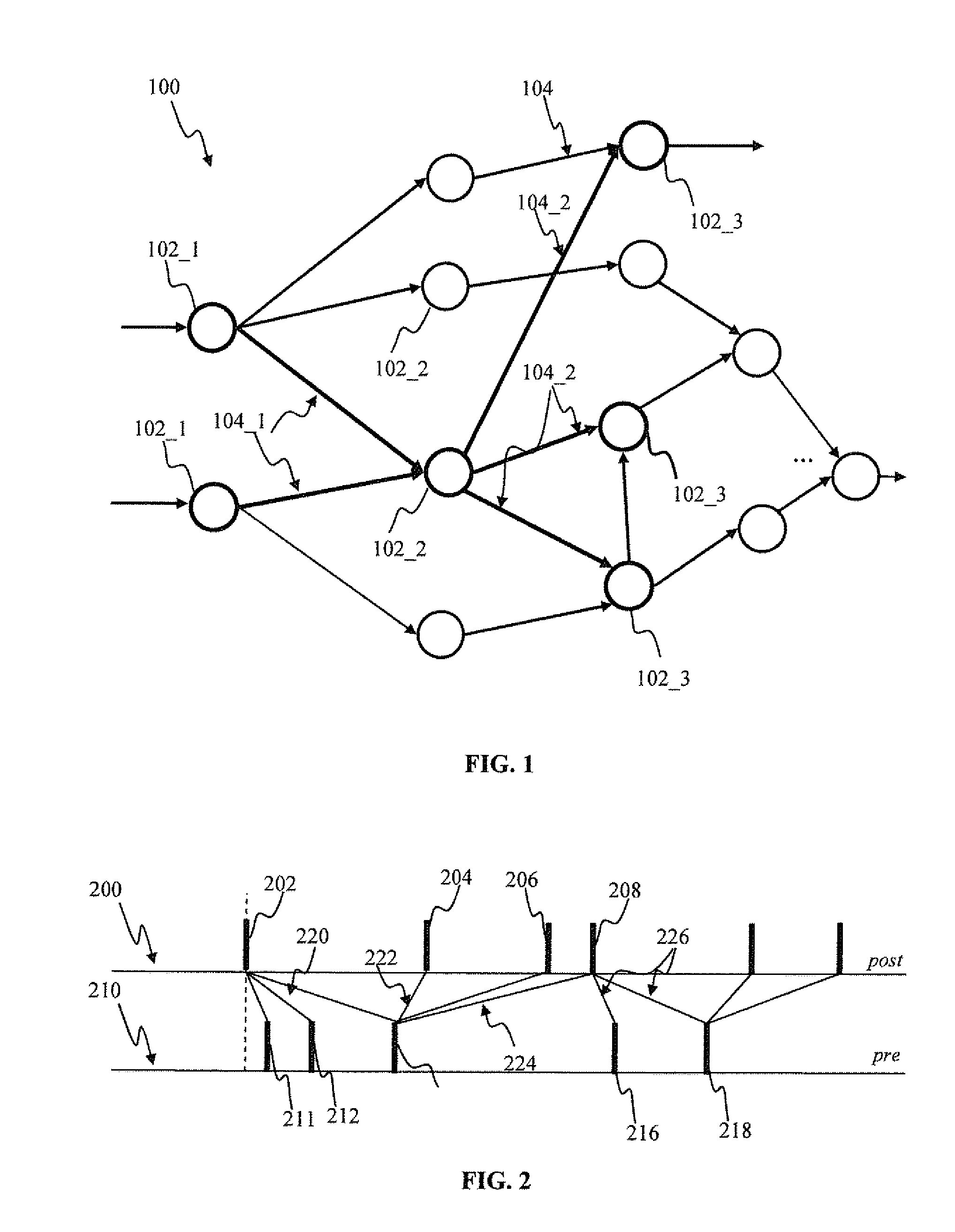Neural network learning and collaboration apparatus and methods
a neural network and learning technology, applied in the field of artificial intelligence or robotic apparatus, can solve the problems of inaccessible users without formal programming knowledge, disadvantageous background knowledge of functions and logical forms of languages, and foregoing programming environments, so as to increase the diversity of micro- and/or macro fields, and reinforce similar learning experiences
- Summary
- Abstract
- Description
- Claims
- Application Information
AI Technical Summary
Benefits of technology
Problems solved by technology
Method used
Image
Examples
example 1
[0105]By way of illustration, in a network comprising 1000 synapses, the merge 520 may be configured as follows:[0106]select splice points at locations 75, 225, 300, 600, 892;[0107]use parent A to provide weights for the segments in the ranges: 1-74, 225-299, 600-891; and[0108]use parent B to provide weights for the segments in the ranges: 75-224, 300-599, 832-1000.
In some implementations, the splice point positions may be varied with e.g., some random jitter, e.g., with respect to Example 1, the splice points may be varied by ±N points and comprise (75, 223, 300, 601, 888) in one realization with N=5.
[0109]Data merges for one or more segments (e.g., the segment 532, 542 in FIG. 5C) may employ various transformations 504 as describe with respect to FIG. 5C. In some implementations, the transformation 504 may be implemented using the following generalized form:
WiO=AWiA+BWiB+CNi, (Eqn. 5)
where Ni is the random weight component, configured to effectuate, inter alia, exploration during...
PUM
 Login to View More
Login to View More Abstract
Description
Claims
Application Information
 Login to View More
Login to View More - R&D
- Intellectual Property
- Life Sciences
- Materials
- Tech Scout
- Unparalleled Data Quality
- Higher Quality Content
- 60% Fewer Hallucinations
Browse by: Latest US Patents, China's latest patents, Technical Efficacy Thesaurus, Application Domain, Technology Topic, Popular Technical Reports.
© 2025 PatSnap. All rights reserved.Legal|Privacy policy|Modern Slavery Act Transparency Statement|Sitemap|About US| Contact US: help@patsnap.com



